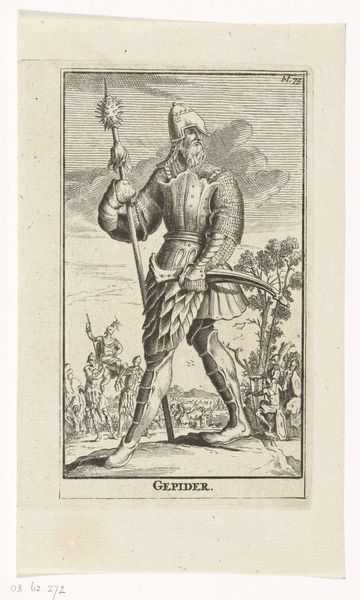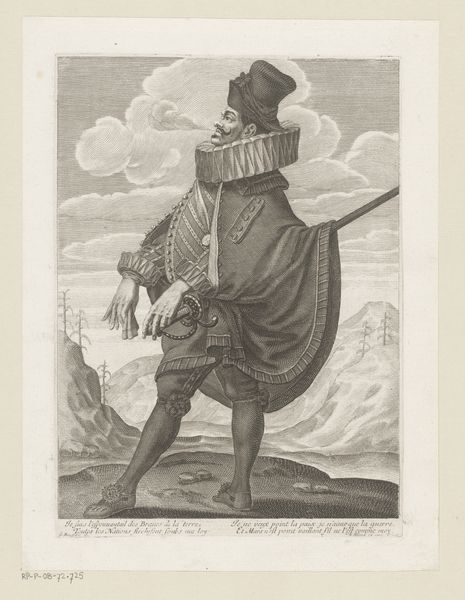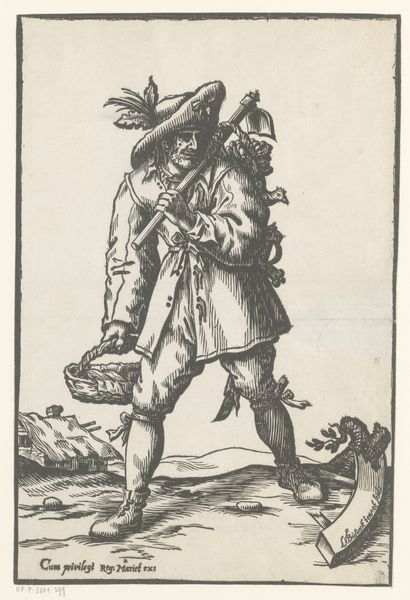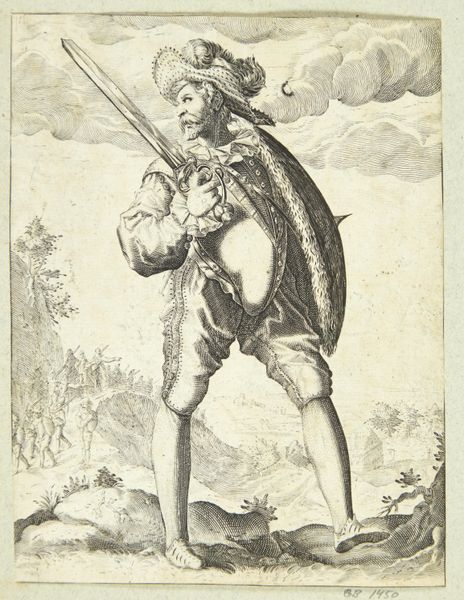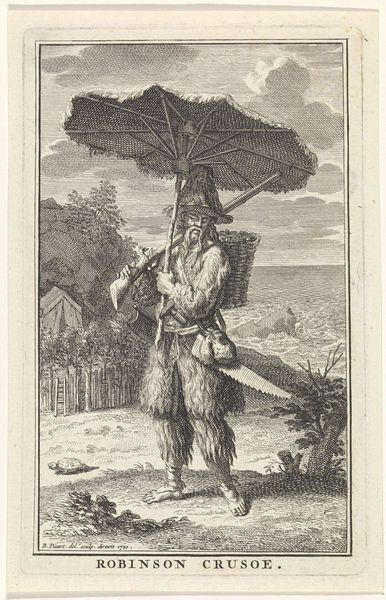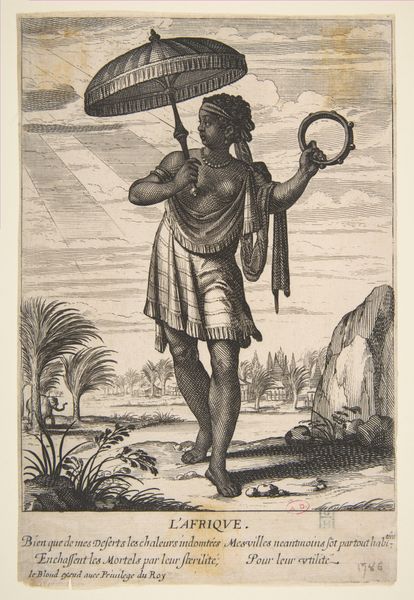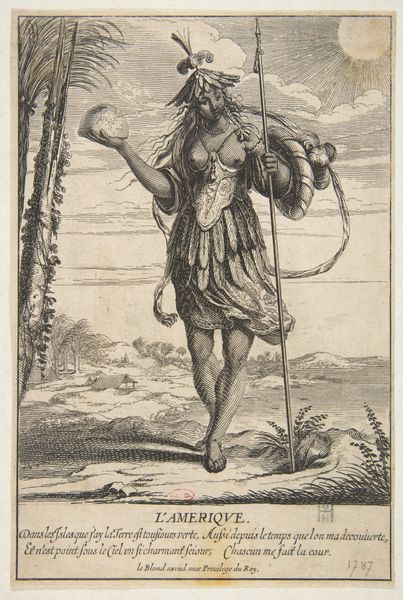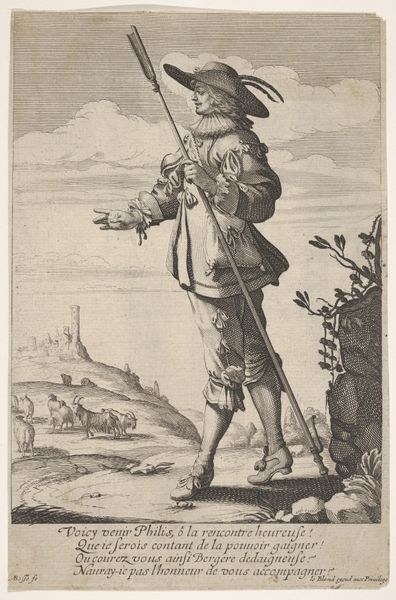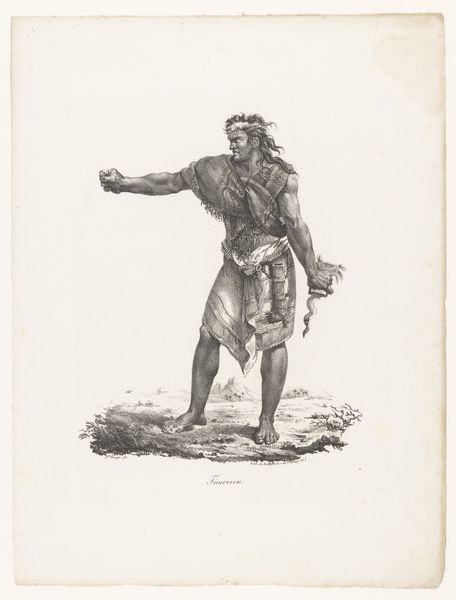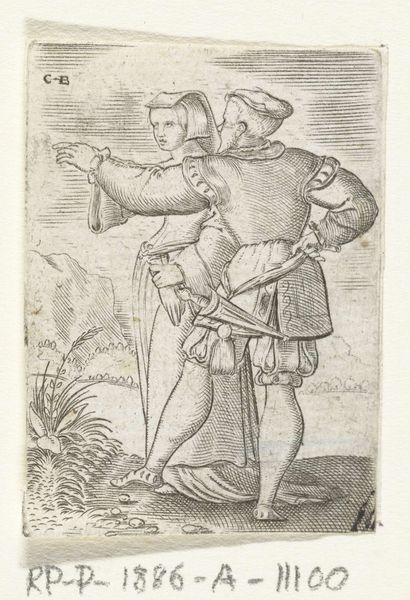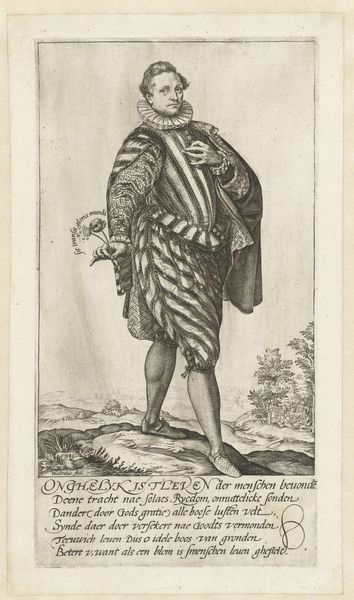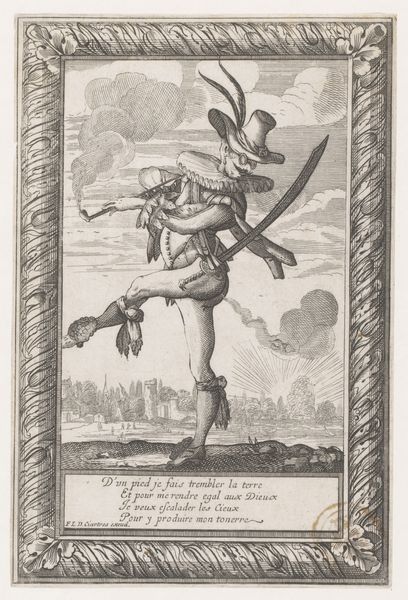
print, etching
#
allegory
#
narrative-art
#
baroque
# print
#
etching
#
old engraving style
#
traditional media
#
genre-painting
#
history-painting
Dimensions: height 299 mm, width 210 mm
Copyright: Rijks Museum: Open Domain
This etching of a Spanish soldier in a landscape was created by Abraham Bosse, a French artist, in the 17th century. The work reflects the visual culture of the period, marked by military conflicts and shifting national identities. Bosse, who converted to Protestantism, used his art to explore themes of identity, power, and morality. Here, the flamboyant attire of the Spanish soldier, complete with an exaggerated collar and feathered hat, contrasts sharply with the figure of death lurking in the shadows. Bosse subtly critiques the soldier's bravado, suggesting a hollowness behind his macho façade. The print invites us to consider the psychological dimensions of warfare and its impact on individual identity. "Courage, to my absurd it change de colour. Mais Baconstant quil et il pourra bien chagerz,” reads the etching, inviting us to confront the relationship between courage and mortality. In this way, the artwork becomes an exploration of the tension between outward appearance and inner vulnerability.
Comments
No comments
Be the first to comment and join the conversation on the ultimate creative platform.
